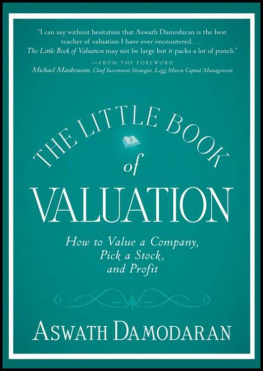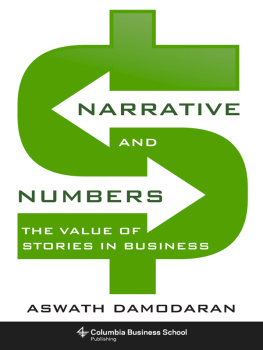
About This E-Book
EPUB is an open, industry-standard format for e-books. However, support for EPUB and its many features varies across reading devices and applications. Use your device or app settings to customize the presentation to your liking. Settings that you can customize often include font, font size, single or double column, landscape or portrait mode, and figures that you can click or tap to enlarge. For additional information about the settings and features on your reading device or app, visit the device manufacturers Web site.
Many titles include programming code or configuration examples. To optimize the presentation of these elements, view the e-book in single-column, landscape mode and adjust the font size to the smallest setting. In addition to presenting code and configurations in the reflowable text format, we have included images of the code that mimic the presentation found in the print book; therefore, where the reflowable format may compromise the presentation of the code listing, you will see a Click here to view code image link. Click the link to view the print-fidelity code image. To return to the previous page viewed, click the Back button on your device or app.
THE DARK SIDE OF VALUATION
Valuing Young, Distressed, and Complex Businesses
Third Edition
Aswath Damodaran
Editor-in-Chief: Greg Wiegand
Executive Editor: Laura Norman
Senior Marketing Manager: Stephane Nakib
Editorial Assistant: Courtney Martin
Managing Editor: Sandra Schroder
Development Editor: Malobika Chakraborty
Senior Project Editor: Lori Lyons
Cover Designer: Chuti Prasertsith
Project Manager: Dhayanidhi Karunanidhi
Copy Editor: Paula Lowell
Proofreader: Larry Sulky
Indexer: Erika Millen
Compositor: codemantra
2018 by Aswath Damodaran
Pearson Education, Inc.
For information about buying this title in bulk quantities, or for special sales opportunities (which may include electronic versions; custom cover designs; and content particular to your business, training goals, marketing focus, or branding interests), please contact our corporate sales department at or (800) 382-3419.
For government sales inquiries, please contact .
For questions about sales outside the U.S., please contact .
Company and product names mentioned herein are the trademarks or registered trademarks of their respective owners.
All rights reserved. Printed in the United States of America. This publication is protected by copyright, and permission must be obtained from the publisher prior to any prohibited reproduction, storage in a retrieval system, or transmission in any form or by any means, electronic, mechanical, photocopying, recording, or likewise. For information regarding permissions, request forms, and the appropriate contacts within the Pearson Education Global Rights & Permissions Department, please visit www.pearsoned.com/permissions/.
This book is sold with the understanding that neither the author nor the publisher is engaged in rendering legal, accounting, or other professional services or advice by publishing this book. Each individual situation is unique. Thus, if legal or financial advice or other expert assistance is required in a specific situation, the services of a competent professional should be sought to ensure that the situation has been evaluated carefully and appropriately. The author and the publisher disclaim any liability, loss, or risk resulting directly or indirectly, from the use or application of any of the contents of this book.
1 18
ISBN-10: 0-13-485410-1
ISBN-13: 978-0-13-485410-6
Pearson Education LTD.
Pearson Education Australia PTY, Limited
Pearson Education Singapore, Pte. Ltd.
Pearson Education Asia, Ltd.
Pearson Education Canada, Ltd.
Pearson Educacin de Mexico, S.A. de C.V.
Pearson EducationJapan
Pearson Education Malaysia, Pte. Ltd.
Library of Congress Control Number: 2017960302
To Noah Henry Damodaran, who arrived just in time for this book on February 20, 2018, and is perfect in every way.
Acknowledgments
This book is dedicated to all those analysts, students, and investors who have challenged me with an unusual or uncommon valuation scenario, usually with the refrain of You cannot really value this with a DCF model, can you? My answer has always been Of course, you can! and the scenarios have added up over time to create both the dark and light sides of this book.
About the Author
Aswath Damodaran is Professor of Finance at the Stern School of Business at New York University. He teaches the corporate finance and equity valuation courses in the MBA program. He received his MBA and Ph.D from the University of California at Los Angeles. He has written several books on corporate finance, valuation, and portfolio management. He has been at NYU since 1986 and has received the Stern School of Business Excellence in Teaching Award (awarded by the graduating class) eight times. He was profiled in BusinessWeek as one of the top twelve business school professors in the United States in 1994 and was chosen the most popular business school professor in 2012.
Preface to the Third Edition
The first edition of this book is showing its age and origins. The idea for this book was born at the end of 1999, toward the end of the Dot-com boom, and was triggered by two phenomena: the seeming inability of traditional valuation models to explain stratospheric stock prices for technology (especially new technology) companies, and the willingness of analysts to abandon traditional valuation metrics and go over to the dark side of valuation, where prices were justified using a mix of new metrics and storytelling. The publication of the first edition coincided with the bursting of that bubble. The second edition came ten years later, just after the 2008 crisis, precipitated by a housing bubble bursting and banks behaving badly. With that crisis came the realization that the dark side of valuation beckons any time analysts have trouble fitting companies into traditional models and metrics, and the book reflected that broader perspective. Rather than focus on just young, high-tech (internet) companies as I did in the first edition, I expanded the discussion to companies that are difficult to value across the spectrum, including distressed companies, commodity firms, and banks.
In the eight years since the second edition was published, there are three macro phenomena that have confounded analysts trying to value companies. The first is that interest rates around the world, and especially so in developed markets, have not only hit historic lows but have become negative in some parts of the world. That has resulted in some analysts giving up on valuation, arguing that it does not work when rates are this low or negative. The second is that global market crises have become almost an annual occurrence, with each year bringing a fresh outbreak in a different part of the world, making risk premiums much more volatile in all markets. Finally, the journey to globalization, which a decade ago seemed unstoppable, has been not only slowed but perhaps even been pushed back in some parts of the world. In the third edition of this book, I look at how best to deal with low interest rates, volatile equity risk premiums, and political risk in valuation.
The first part of this book reviews the basic tools you have available in valuation. In particular, it provides, in compressed format, a summary of conventional discounted cash flow models, probabilistic models (simulations, decision trees, and so forth), relative valuation models, and real options. Much of what is included in this section has already been said in my other books on valuation.
Next page









